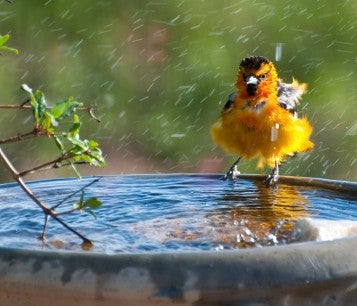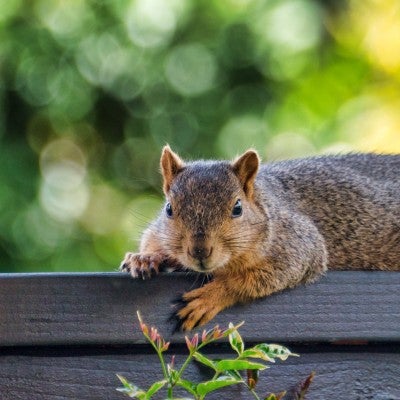Named for their stubby tails, bobcats are so elusive that most people would be lucky to catch a glimpse of one in their lifetime. The bobcat is 10 times smaller than a cougar but two times larger than a housecat, and often confused with both. Because of their smaller size, solitary nature and reliance on natural prey, bobcats are less likely to be involved in conflicts with humans relative to other wild animals in communities like raccoons and coyotes.
Contents

Should I be worried if I see a bobcat?
Although bobcats are primarily nocturnal, they may be seen during the day while hunting/foraging for food, especially between April and July when they are most likely to have dependent young. Simply seeing a bobcat by day does not mean that the animal is rabid, sick or aggressive.
If a bobcat doesn’t appear scared of you, they probably learned to associate people with food (likely because someone has been feeding them) and may exhibit boldness or even approach you. These bobcats can easily be scared away by making loud noises such as yelling or blowing whistles, dousing them with water houses or squirt guns or throwing objects such as tennis balls toward them.
Are bobcats aggressive?
Bobcats are much more afraid of us than we are of them. Bobcats may lose their natural fear of people when they find free sources of human-associated food (e.g., pet food left on porches) in neighborhoods and have repeated contact with people with no negative consequences.
You can teach an overly bold bobcat to be wary of people by using negative conditioning or “hazing.” To do that, be big and scary: Raise your arms over your head, yell or blow a whistle and bang metal pot tops together as you move toward the animal or spray the animal’s hindquarters with a hose or water gun. Hazing works best if you keep the negative reinforcement going until you deter the bobcat from the property.
No matter how big or small your outdoor space, you can create a haven for local wildlife. By providing basic needs like water, food and shelter, you can make a difference in your own backyard.

Do bobcats attack dogs, cats or other companion animals?
The best way to protect pets from bobcats is to never let companion animals, including cats, outside unsupervised, and to keep dogs on a leash 6 feet long or less while walking in public areas. Reduce food attractants around your home by keeping a tight lid on garbage cans, putting garbage out the morning of pickup and not the night before, feeding pets indoors, cleaning up around or removing bird feeders, removing bird baths, and not feeding wildlife. You may wish to trim shrubs and grasses near the home so that bobcats do not have a place to hide. For community cats, feed the cats once per day in the middle of the day, then clean up the food shortly after.
Bobcats may prey on small animals like rabbits, guinea pigs or chickens if they are not kept indoors or housed in sturdy outside structures. (Pets such as rabbits and guinea pigs should also be kept indoors for their health and safety, especially at night.) A secure enclosure should be made with heavy, 16-gauge welded wire with 1-inch by 1-inch openings, and perimeter fencing that is buried down into the ground or runs 12-plus inches outward and horizontally to the ground. (This is called an L-shaped footer.) You must also reinforce the walls, doors and roof of the structure. Chicken wire alone is not wildlife-proof. If legal in your area, an electrified exclusion "hot-wire" will teach wildlife including bobcats, raccoons and bears to avoid your domestic animal cages/coops. Although reinforcing a pen may be a one-time cost and temporary inconvenience, once an animal pen is wildlife-proofed, the problem is solved for the long term.
Do bobcats attack farm animals?
Cases of bobcats killing sheep or other domestic farmed animals are extremely rare and may be a case of mistaken identity. To protect these animals, enclose them all in a secure pen with a predator-proof roof (as bobcats can climb) from dusk to dawn. To protect young animals during the day, use electric wires along fences over 6 ft high. Note any nearby tree branches that might provide an easy route for bobcats to enter fenced areas. Motion detecting lights and sounds may work temporarily to scare away bobcats.
With regards to chickens, boost your coop’s security and use harassment techniques to deter wild animals who are tempted to break in because chickens, eggs and supplemental feed like corn (which attracts rodents) will continually draw in wildlife. A secure coop must have perimeter fencing that is buried down into the ground or run 12-plus inches outward and horizontally to the ground (this is called an L-shaped footer).
Chicken wire alone is not wildlife-proof. Heavy, 16-gauge welded wire with 1-inch by 1-inch openings is a good choice, as is electric fencing. Although reinforcing a pen may be a temporary inconvenience, once an animal pen is wildlife-proofed, the problem is solved for the long term.


